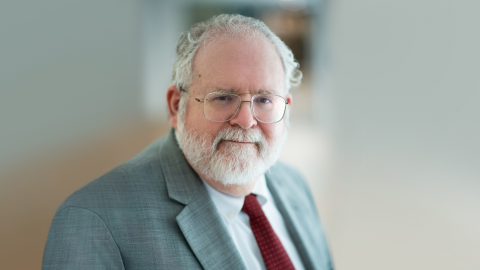Peter Bergen has written what in effect are two books about terrorism. Both are valuable. One is a riveting, thoroughly researched account of the evolving state of the threat as a growing number of American citizens join the ranks of foreign terrorist movements—and of how U.S. intelligence and law-enforcement agencies are addressing the constantly shifting threat. The other is a skilled defense of what Mr. Bergen would say is the moderate, middle-of-the-road approach that has characterized the Obama administration’s anti-terror effort: one that attempts to steer between the perceived extremes of panicky overreaction and a failure to acknowledge how politically and socially devastating terror attacks can be.
The author, a CNN national-security analyst who has written four books on al Qaeda, is a skilled and sensitive reporter with unparalleled access to the law-enforcement and intelligence communities. In “United States of Jihad: Investigating America’s Homegrown Terrorists,” he takes on the story of the 330 American citizens who, since the attacks of Sept. 11, 2001, have, in one way or another, become involved in what he calls “Binladenism,” the ideology that underpins both al Qaeda and its more radical Islamic State offshoot and that separates both groups from less violent forms of Salafism and Islamic fundamentalism. These homegrown terrorists have an average age of 29; more than one-third of them are married. Though 12% have served time in prison, Mr. Bergen insists that “they are, on average, as well-educated and emotionally stable as the typical citizen.”
American-born jihadists seem to come in three basic types. The largest group is made up of marginal figures who seem to stumble into terror plots—often with an assist from undercover federal agents. As an example, Mr. Bergen describes the case of Matthew Llaneza, a Californian diagnosed with bipolar disorder and paranoid schizophrenia. The religious and political beliefs of this convert to Islam seemed more an aspect of his mental disorders than a conscious embrace of a radical ideology. A federal agent, who worked undercover in the office of Llaneza’s probation officer, encouraged Llaneza to elaborate his violent delusions and then take steps to carry them out until Llaneza was ready to detonate what he thought was a car bomb at a Bank of America office in Oakland, Calif., in February 2013.
A significant number of homegrown terrorists are, like Llaneza, emotionally and mentally unstable individuals. Mr. Bergen suggests that without the attention of overzealous law-enforcement officials, little would come of the fantasies of these lost souls. “Since 9/11 the FBI has organized more jihadist terror plots in the United States than any other organization,” he writes.
At the other end of the spectrum, a handful of American jihadists have emerged as serious actors at the global level. Anwar al-Awlaki, the cleric from Falls Church, Va., who was once a go-to source for outlets like the Washington Post, became a major international force in al Qaeda. He was one of the most dangerous terrorists to focus on attacks in the United States until 2011, when he was killed in Yemen in a drone strike.
Also in this category: David Coleman Headley, a DEA informant and father of four based in Washington, D.C., who contacted Lashkar-e-Taiba, a jihadist group allied with al Qaeda, on a trip to Pakistan in 2000. Headley played a major role in planning and orchestrating the 2008 Mumbai attack that killed 166 people, including six Americans.
Somewhere between the underworld of dazed and confused drifters and the superstars of global jihad is a middle group: lone wolves like Army Maj. Nidal Hasan, who killed 13 people at Fort Hood, Texas, in 2009. Often self-radicalized through a combination of embittering personal experiences and exposure to online jihadist materials, these people pose the most complex problem for law enforcement. Mr. Bergen argues that, thanks to improved analytic methods, the FBI is getting better at identifying which individuals pose the greatest threat. Unfortunately, as he notes, when terrorists maintain “good operational security,” as Tashfeen Malik and Syed Rizwan Farook did in San Bernardino, Calif., they can escape detection with horrifying consequences.
When it comes to thwarting homegrown terrorism, Mr. Bergen identifies and defends what he sees as the sane middle ground that, in his view, this White House has mostly occupied. Rash law enforcement, he warns, can undermine civil liberties and alienate those Muslim communities in the U.S. who provide many of the most important warnings about potentially violent individuals. But public perceptions of the danger from jihadist terrorism have a deeper foundation than Mr. Bergen seems to acknowledge. As he notes, ill-timed reassurances from the Obama administration that jihadist terrorism had been contained, or that ISIS is a “junior varsity” group, have undermined the public’s confidence. Combine that concern with the chaos spreading throughout the Middle East, and the danger seems real enough.
Yet Mr. Bergen insists that jihadist terror, unlike the existential crises of the Civil War, World War II and the Cold War, is “not such a threat.” Jihadists have not gotten their hands on WMDs; since 9/11 they have not managed another high-profile attack in the U.S. And improved security measures are making the U.S. safer by the day.
One hopes that Mr. Bergen is right: Lone wolves will remain a danger, yet the risk from self-radicalized actors without access to the resources of large terror groups is unlikely to rise to the level of strategic threat. But as Americans observe events like the Paris attacks, as they read about women and children being openly sold in Syrian slave markets and Islamic State gleefully burning prisoners alive, they wonder whether the Obama administration really understands the convulsions sweeping through the Islamic world and whether what we are seeing now is the full fury of the storm or merely the first scenes of a drama still to unfold.
















